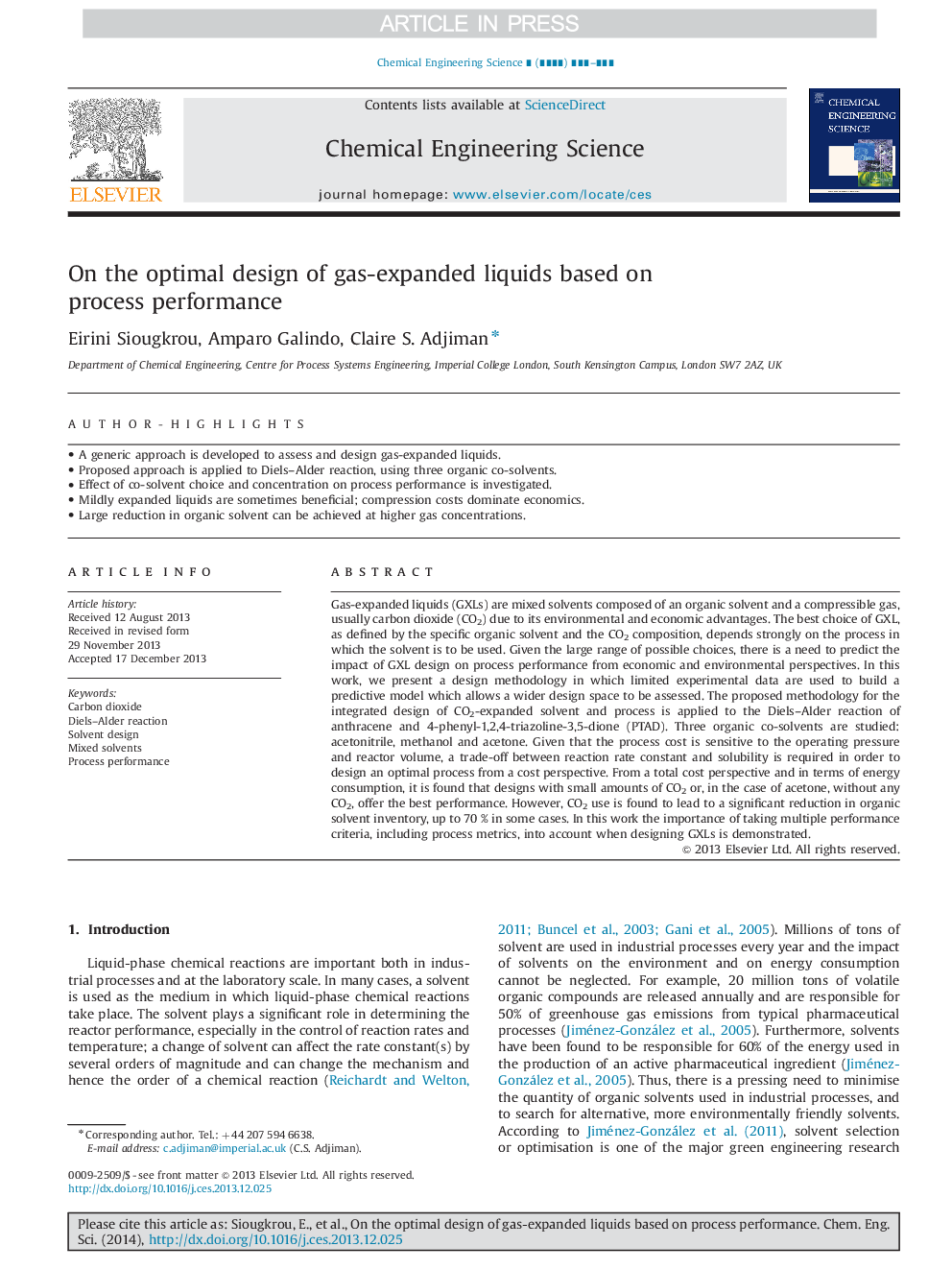| کد مقاله | کد نشریه | سال انتشار | مقاله انگلیسی | نسخه تمام متن |
|---|---|---|---|---|
| 6591177 | 456865 | 2014 | 12 صفحه PDF | دانلود رایگان |
عنوان انگلیسی مقاله ISI
On the optimal design of gas-expanded liquids based on process performance
ترجمه فارسی عنوان
در طراحی مطلوب مایعات گازی گسترش یافته بر اساس عملکرد فرآیند
دانلود مقاله + سفارش ترجمه
دانلود مقاله ISI انگلیسی
رایگان برای ایرانیان
کلمات کلیدی
دی اکسید کربن، واکنش دیلسا آلدری، طراحی حلال، حلال های ترکیبی عملکرد فرآیند،
موضوعات مرتبط
مهندسی و علوم پایه
مهندسی شیمی
مهندسی شیمی (عمومی)
چکیده انگلیسی
Gas-expanded liquids (GXLs) are mixed solvents composed of an organic solvent and a compressible gas, usually carbon dioxide (CO2) due to its environmental and economic advantages. The best choice of GXL, as defined by the specific organic solvent and the CO2 composition, depends strongly on the process in which the solvent is to be used. Given the large range of possible choices, there is a need to predict the impact of GXL design on process performance from economic and environmental perspectives. In this work, we present a design methodology in which limited experimental data are used to build a predictive model which allows a wider design space to be assessed. The proposed methodology for the integrated design of CO2-expanded solvent and process is applied to the Diels-Alder reaction of anthracene and 4-phenyl-1,2,4-triazoline-3,5-dione (PTAD). Three organic co-solvents are studied: acetonitrile, methanol and acetone. Given that the process cost is sensitive to the operating pressure and reactor volume, a trade-off between reaction rate constant and solubility is required in order to design an optimal process from a cost perspective. From a total cost perspective and in terms of energy consumption, it is found that designs with small amounts of CO2 or, in the case of acetone, without any CO2, offer the best performance. However, CO2 use is found to lead to a significant reduction in organic solvent inventory, up to 70 % in some cases. In this work the importance of taking multiple performance criteria, including process metrics, into account when designing GXLs is demonstrated.
ناشر
Database: Elsevier - ScienceDirect (ساینس دایرکت)
Journal: Chemical Engineering Science - Volume 115, 1 August 2014, Pages 19-30
Journal: Chemical Engineering Science - Volume 115, 1 August 2014, Pages 19-30
نویسندگان
Eirini Siougkrou, Amparo Galindo, Claire S. Adjiman,
